#Christian sapphic
Explore tagged Tumblr posts
Text
[PT: Bisexual Christian flag
Achillean Christian flag
Sapphic Christian flag. end PT]

Bisexual Christian flag

Achillean Christian flag

Sapphic Christian flag
#flags#themed flags#bisexual Christian#bi Christian#Christian bisexual#Christian bi#achillean Christian#Christian achillean#sapphic Christian#Christian sapphic#bi#bisexual#bi flags#achillean#achillean flags#sapphic#sapphic flags#culture: Christianity#theme: religion#exclusive#needs ID#culturally exclusive
140 notes
·
View notes
Text
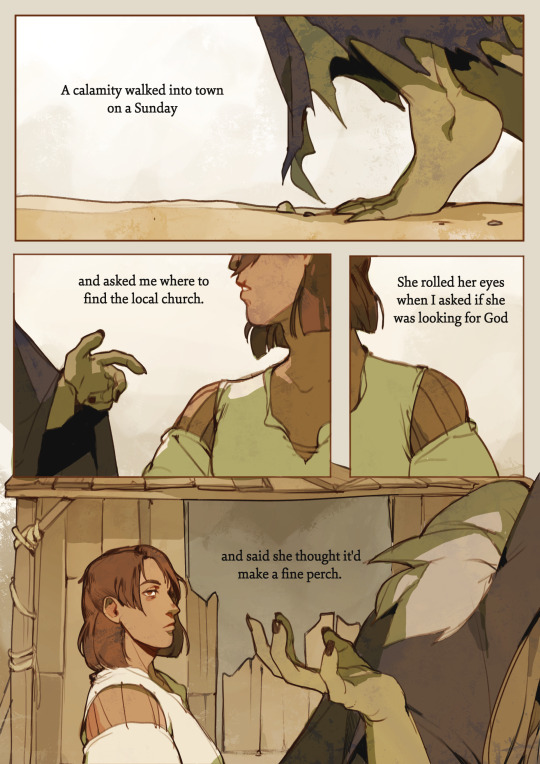

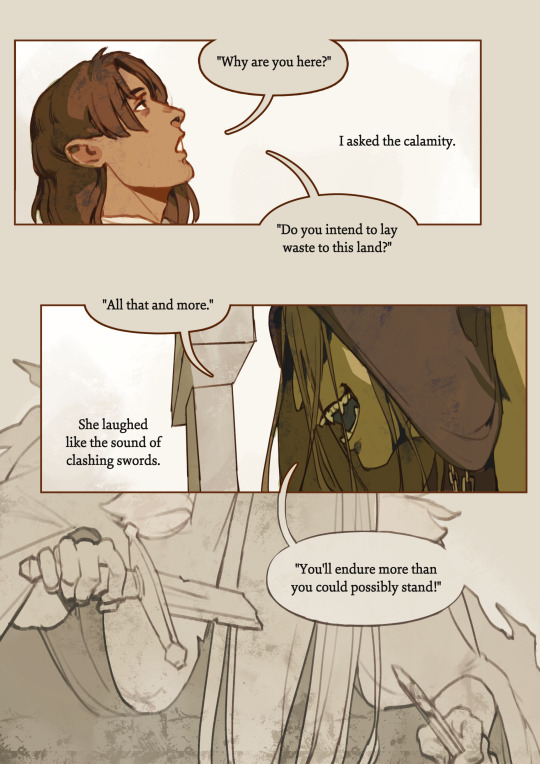

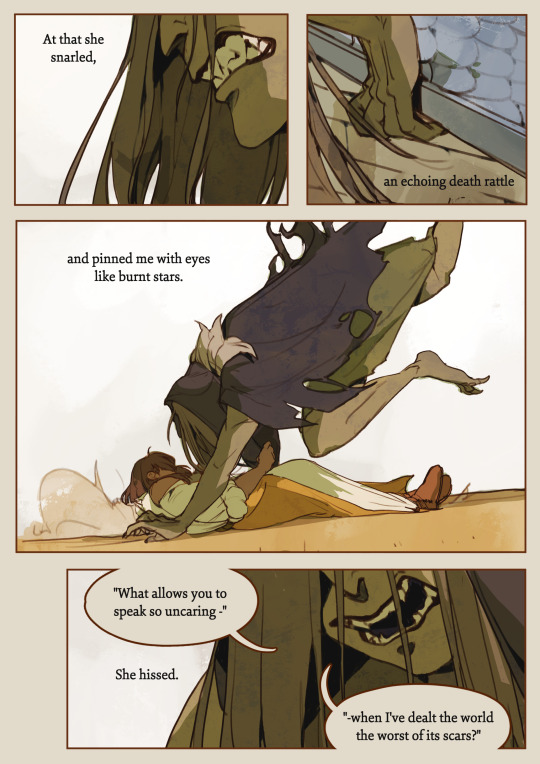
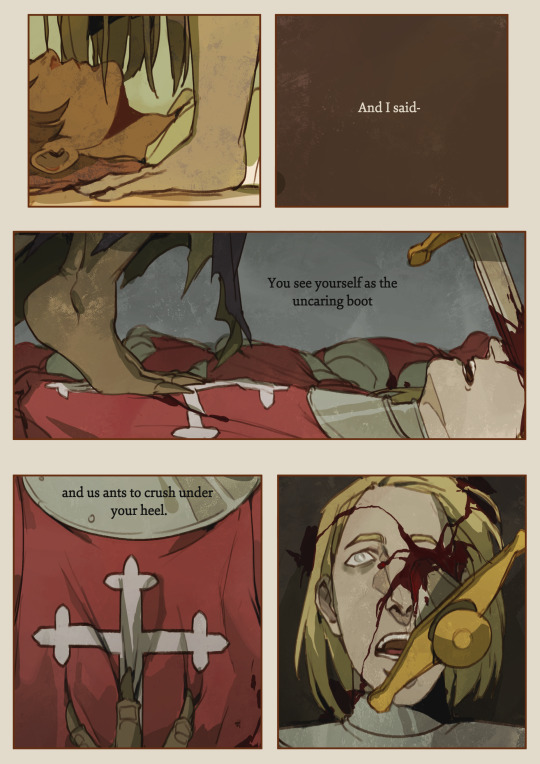
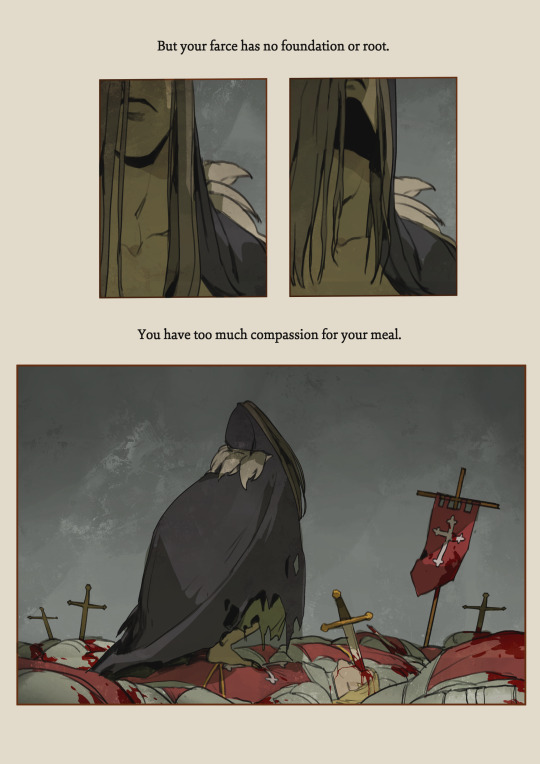
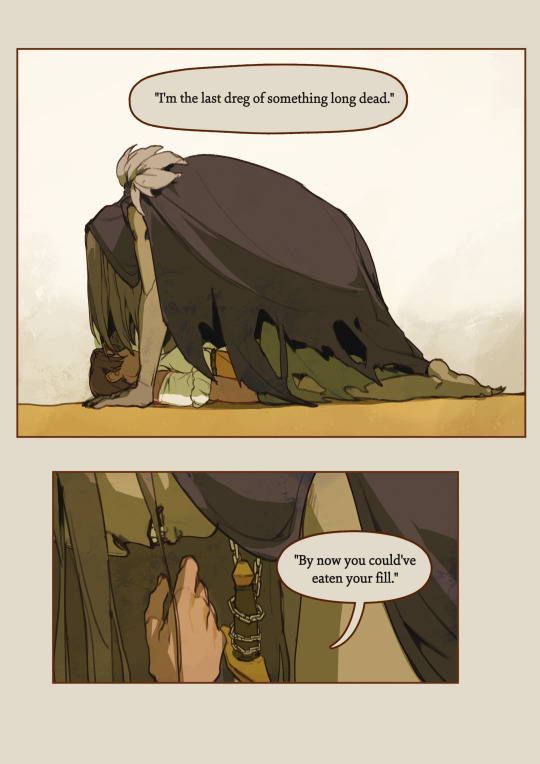
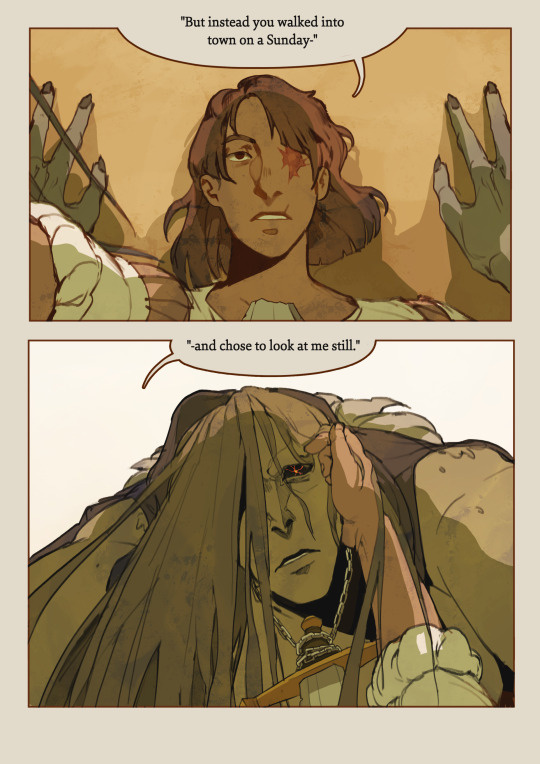
the calamity.
a comic about being seen.
--
creative notes:

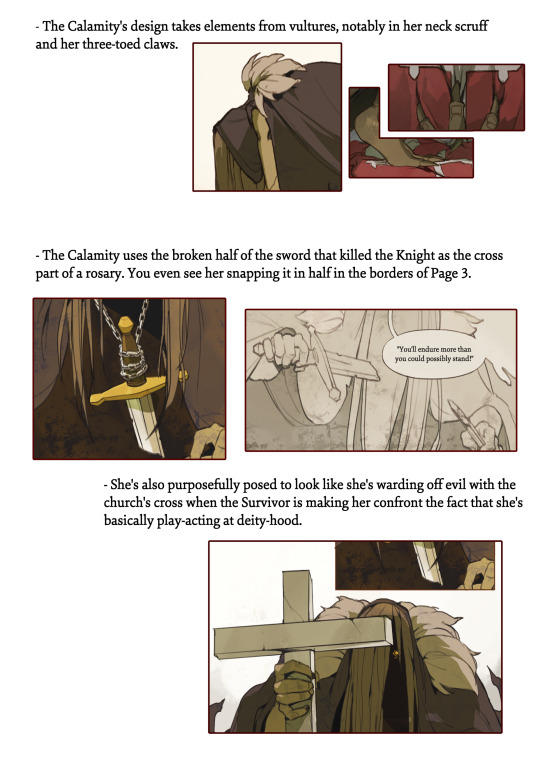
--
all my other comics
store
#cw: blood + eye scarring#oh the inherent intimacy of seeing and being seen#just a comic about how the desire to be seen and shown love and compassion unites us all#also big scary monster lady pretty#girl power! the personification of disaster and strife uses she/her pronouns!#i also feel somewhat obligated to mention here that i dont have anything against christianity as a whole#i just think the concept of God is interesting#i went to a christian school for 12 years im allowed to make this comic#comic art#sapphic#yes. interpret the subtext#stillindigo art#heartearters#thats the name of the anthology this will belong to. whenever i finish it#stillindigo comics
25K notes
·
View notes
Text

#pride month#lgbt pride#queer#lgbtqia#lesbian#lgbtq community#nonbinary#sapphic#pride 2024#pride icons#pride and prejudice#gay girls#nonbinary lesbian#lgbtq#pride flag#queer pride#queer community#trans pride#pride#gay pride#pride month 2024#happy pride month#jesus christ#faith in jesus#jesus is coming#jesus loves you#bible#jesus#christianity#god
3K notes
·
View notes
Text
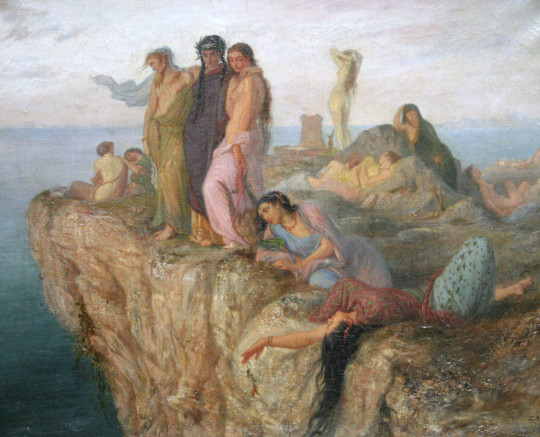
Antoine-Christian Zacharie called Tony Zac – Female Companions of Sappho (ca. 1868)
#art#art history#antoine-christian zacharie#tony zac#austrian#lesbian#lesbian art#wlw#women#fine art#oil#oil on canvas#sappho#painting#sapphic#XIXth century#19th century#female homosexuality
472 notes
·
View notes
Text


My collages are in a lavender marriage
#my art#Collage#Ethel Cain#sun bleached flies#papercraft#analog collage#Florence Welch#Christianity#Religious guilt#saints and sinners#Adam and eve#Sapphic#Catholic guilt#preachers daughter#Web Weaving
1K notes
·
View notes
Text

Discretion dating!
#chinese lady#knee boots#hot asian girl#botas#thigh high boots#christian louboutin#leather coat#black gloves#asian model#fashion#red lips#red soles#discrete#asian dating#sapphic
141 notes
·
View notes
Text
Here is my medieval lesbian nun essay for those interested!
Her Noble Beloved: Lesbian Eroticism and Faith in Medieval Convent Life
For almost as long as nuns have existed, the existence of lesbian nuns has been a topic of endless speculation, derision, titillation and fascination, and yet very little is known about the actual lived experiences of the nuns who engaged in such relationships. Because of the fact that women have been mostly ignored throughout history both in their own times and by historians, and the fact that homosexuality has been both loosely defined and hidden throughout most of Christian history, it is difficult to put together an understanding of who the lesbian nuns of the Middle Ages were, what their lives were like, or what defines a woman as lesbian at all. In more recent years, there have been several sources collected uncovering a hidden history of medieval nuns who could be understood as lesbians, either through engagement in homosexual acts, envolvement in passionate close friendships and/or creation of homoerotic literature and poetry.
However, even though there is now a general agreement that lesbian nuns have existed and even some information on how they lived their lives, there is still a common misconception that lesbian sexuality in convents existed despite or even in contradiction to the faiths of the nuns involved. This is assumed because throughout its existence the Catholic Church has condemned homosexuality. However when looking at the records left behind by nuns themselves, it becomes clear that they did not see their lives in that way. I will argue that not only did many nuns view their lesbianism as an important and positive part of their faith and relationship with Christ, but that understanding lesbian nuns is integral to understanding the role of nuns and convent life in the history of Christianity overall.
In order to develop a fruitful understanding of the ways in which lesbianism has played a role in the history of convent life, it is first necessary to define the term “lesbian” as it is being used in this paper. “Lesbian” in the modern sense refers to a particular social and political category and identifier for women who engage solely in romantic and sexual relationships with other women. This definition has emerged mostly in the past 150 years, and is not applicable for understanding the lives of women in the Middle Ages. There was no such thing in medieval Europe as an identity for homosexuals, rather there were only people who engaged in homosexual acts. The few records of female homosexual sex acts in the era are all from records of legal proceedings and criminal persecutions, and those acts were grossly misunderstood. If it is difficult to uncover histories of male homosexuals, it is even harder to create lesbian histories because, as Judith M. Bennett simply explains, “Women wrote less; their writings survived less often… and they were less likely than men to come to the attention of civic or religious authorities.”
Furthermore, since the historical understanding of homosexuality at the time has been defined solely on the basis of sex acts, it ignores “the evidence… of intense emotional and homoerotic relations between medieval nuns.” Bennett explains. Both the modern and historical definitions of female homosexuality are not appropriate for understanding a history of lesbian women in the historical contexts they existed in. Because of this, I am using part of Bennett’s definition of “lesbian-like” as “women whose lives might have particularly offered opportunities for same sex love.” This is how the term “lesbian” should be understood as it applies to the women discussed in this paper.
Some medieval convents were places of learning and scholarship, where nuns were not only literate and well read but produced works of theology, poetry and literature. In some of the works that were produced in these convents, there can be found poetry and prose which celebrates amorousness and homoerotic love between women. Hadewijch, a thirteenth century Flemish Beguine (woman who lived in monastic poverty without taking official vows), wrote often on the theme of Minne, or love, the same word often used in secular romantic poetry of the time. In Hadewijch’s writing, the Minne she expresses towards her fellow Beguines is inextricably linked with her love of Christ. As Professor E. Ann Matter explains, “these writings stress that only through the imperfect experience of earthly love can union with the heavenly lover be glimpsed.” In Hadewijch’s “Letter 25,” the section addressed to a fellow Beguine named Sara is a clear example of the important relationship between lesbian love and love for Christ in the monastic lives of women.
“Greet Sara also on my behalf, whether I am anything to her or nothing.
Could I be fully all that in my love I wish to be for her, I would gladly do so; and
I will do so fully, however she may treat me. She has largely forgotten my
affliction, but I do not wish to blame or reproach her, seeing that Love [Minne]
leaves her at rest, and does not reproach her, although Love ought ever anew to
urge her to be busy with her noble Beloved. Now that she has other occupations
and can look on quietly and tolerate my heart’s affliction, she lets me suffer. She
is well aware, however, that she should be a comfort to me, both in this life of
exile and in the other life in bliss. There she will indeed be my comfort, although
she now leaves me in the lurch.”
The intensity of Hadewijch’s love for Sara is apparent in this writing, and as Matter puts it, “whether or not their relationship was explicitly sexual, it seems a possible interpretation that Hadewijch and Sara were ‘Particular Friends.’” Notably, it is through this love that Hadewijch urges Sara towards the “noble Beloved,” Christ. The lesbian affections present are far from a contradiction of Hadewijch’s faith, rather they are an integral part of it.
In other works produced by nuns, the passionate love expressed between women extends into the territory of the erotic. In one poem written by an unknown author in the twelfth century in a Bavarian women’s monastery, the female poet addresses another woman in the style of finamour- courtly love- with the poet acting as the lover and the subject the beloved.
“To G.; her singular rose
From A. the bonds of precious love.
What is my strength, that I may bear it,
That I should have patience in your absence?
Is my strength the strength of stones,
That I should await your return?
I, who grieve ceaselessly day and night
Like someone who has lost a hand or a foot?
Everything pleasant and delightful
Without you seems like mud underfoot
I shed tears as I used to smile,
And my heart is never glad.
When I recall the kisses you gave me,
And how with tender word you caressed my little breasts,
I want to die
Because I cannot see you.
What can I, so wretched, do?
Where can I, so miserable, turn?
If only my body could be entrusted to the earth
Until your longed-for return
Or if passage could be granted to me as it was to Habakkuk
So that I might come there just once
To gaze on my beloved’s face-
Then I should not care if it were the hour of death itself.”
This poem is quite remarkable for its seeming overt lesbian sexuality, to the point that John Boswell has called it “perhaps the most outstanding example of medieval lesbian literature.” However, although the content of the piece itself is exceptional, it is fairly conventional in terms of structure and themes. It is composed of rhymed couplets and, Matter explains, tonally echoes the spirituality of medieval readings of the Song of Songs. Even as the piece pushes the boundaries with its eroticism, it harkens back to and celebrates a deeply rooted Christian faith in its language and style. Additionally, Matter notes that the piece fits within “the sophisticated and venerable tradition of spiritual friendship.” And its theme of “longing for the absent beloved” situates it among the many works of verse on the topic of courtly love, a concept also explored by Hadewijch in her writing.
While Hadewijch expressed affection and intimacy for her monastic sisters, and the anonymous poet above composed erotic love verses, one later nun’s lesbian affair made her an exceptional and outrageous figure- and an invaluable reference point for understanding the complexity of lesbian nuns’ relationships with their faith, Christ, and the Church.
Benedetta Carlini was an exceptional woman even before the sex scandal which she is known for. She became a nun in a fairly common way, being brought to a convent at the age of nine by her parents. She was from a well-off family as evidenced by her literacy, and managed to become Abess of the Convent of the Mother of God before the age of 30. She is best known, however, for her sexual relationship with fellow nun Bartolomea Crivelli which was documented in Ecclesiastical records from 1619-23. While this places her in a slightly later time period than the other women discussed in this paper, it is still important to consider her case as it is the most well documented case of a sexual relationship between nuns in the Medieval or Early Modern period, and furthermore much of the detail is taken directly from the testimony of Bartolomea, albeit recorded by a male scribe. While it is important to note that the truth of the relationship may be obscured by the women’s attempts to minimize their actions as well as the misunderstandings and misgivings of the authorities creating documentation, it is still a remarkable record of the life of a lesbian nun and how her faith was deeply interwoven with her sexuality.
One document describes the sex acts of Benedetta and Bartolomea in detail. However, Judith C. Brown notes, “because [the authors] lacked an imaginative schema to incorporate the sexual behaviors described, they had a rather difficult time assimilating the account.” She further explains that as the sex acts are described, the handwriting of the document itself deteriorates and words are crossed out, rewritten, or completely illegible.
“For two continuous years, two or three times a week, in the evening after disrobing and going to bed and waiting for her companion, who serves her, to disrobe also, she would force her into the bed, and kiss her as if she were a man she would stir herself on top of her so much that both of them corrupted themselves because she held her by force sometimes for one, sometimes for two, sometimes for three hours. And [she did these things] during the most solemn hours, especially in the morning, at dawn. Pretending that she had some need, she would call her, taking her by force she sinned with her as was said above. Benedetta, in order to have greater pleasure, put her face between the other's breasts and kissed them, and wanted always to be thus on her. And six or eight times, when the other nun did not want to sleep with her in order to avoid sin, Benedetta went to find her in her bed and, climbing on top, sinned with her by force. Also at that time, during the day, pretending to be sick and showing that she had some need, she grabbed her companion's hand by force, and putting it under herself, she would have her put her finger in her genitals, and holding it there she stirred herself so much that she corrupted herself. And she would kiss her and also by force would put her own hand under her companion and her finger into her genitals and corrupt her. And when the latter would flee, she would do the same with her own hands. Many times she locked her companion in the study and making her sit down in front of her, by force she put her hands under her and corrupted her; she wanted her companion to do the same to her and while she was doing this she would kiss her. She always appeared to be in a trance while doing this.”
The prurient detail of the document is astonishing considering the sexual taboos of the time, however what follows is even more fascinating as the Benedetta’s role in the affair takes on a fascinating mystical and religious element.
“Her Angel, Splendidiello, did these things appearing as a boy of eight or nine years of age. This Angel Splendidiello, through the mouth and hands of Benedetta, taught her companion to read and write, making her be near her on her knees and kissing her and putting her hands on her breasts…
This Splendidiello called her his beloved; he asked her to swear to be his beloved always and promised that after Benedetta's death he would always be with her and would make himself visible. He said I want you to promise me not to confess these things that we do together, I assure you that there is no sin in it; and while we did these things he said many times: give yourself to me with all your heart and soul and then let me do as I wish...
He made the sign of the cross all over his companion’s body after having committed with her many dishonest acts; [he also said] many words that she couldn't understand and when she asked him why he was doing this, he said that he did this for her own good. Jesus spoke to her companion [through Benedetta] three times, twice before doing these dishonest things. The first time he said he wanted her to be his bride and he was content that she give him her hand, and she did this thinking it was Jesus. The second time it was in the choir at 40 hours, holding her hands together and telling her that he forgave her all her sins. The third time it was after she was disturbed by these affairs and he told her that there was no sin involved whatsoever and that Benedetta while doing these things had no awareness of them. All these things her companion confessed with very great shame.”
The role of Benedetta’s apparent spiritual visions in her lesbian affair raises numerous questions, the answers to which can only be speculated on. One of the most obvious considerations is the possibility that Benedetta did not in fact believe in what she was saying, and simply lied to excuse her behavior and prevent Bartolomea from going to the authorities. I believe this can be refuted on the grounds that Benedetta reported many other miraculous experiences during her life which had no association with her affair. In fact, it was during an investigation into claims that she had been visited by Christ and male angels and received stigmata that the affair was discovered in the first place.
It is entirely possible that Benedetta really believed in some or all of the experiences she claimed to have. There were many cases in the time period of nuns claiming to have visions from Christ or angels, and even precedent for those visions being in an eroticized context as in the experiences of the 12th century Hildegard de Bingen, a fellow abbess who was venerated after her death and recently canonized as a saint. While on the surface Benedetta’s claims of being possessed by Jesus during lesbian sex acts may seem outrageous, they can be better understood within the culture of the “heavenly bridegroom” which positioned Christ as a husband figure to nuns. As seen in the above writing of Hadewijch, there is precedent for situations in which the Christ as husband figure worked to sublimate lesbian desires between nuns. While Benedetta’s case is certainly an extreme version of that dynamic, it is not necessarily as idiosyncratic as it seems at first glance.
Ultimately, it is clear that rather than lesbianism contradicting their faiths, many medieval lesbian nuns actually used faith as an integral part of their lesbian affections and relationships. Be it a scorned lover urging her sister beloved to follow the noble Beloved, a monastic woman using biblical style and allusions in her erotic poetry, or a nun enacting lesbian sex acts as part of purported visions from Christ, faith played an essential part in the experience of many medieval lesbian nuns. In order to build a clearer and better rounded understanding of these women and their lives, we must unlearn the assumptions we have based on homophobic and heteronormative histories, and begin to meet these women as they understood themselves and their faith on their own terms.
Works Cited
Bennett, Judith M. “‘Lesbian-Like’ and the Social History of Lesbianisms.” Journal of the History of Sexuality 9, no. 1/2 (2000): 1–24. http://www.jstor.org/stable/3704629.
Brown, Judith C. “Lesbian Sexuality in Renaissance Italy: The Case of Sister Benedetta Carlini.” Signs 9, no. 4 (1984): 751–58. http://www.jstor.org/stable/3173632.
Matter, E. Ann. “My Sister, My Spouse: Woman-Identified Women in Medieval Christianity.” Journal of Feminist Studies in Religion 2, no. 2 (1986): 81–93. http://www.jstor.org/stable/25002043.
#my writing#lesbian#dykeposting#wlw#sapphic#lesbian history#lgbt history#women's history#renaissance#medieval#christianity#history of christianity#essay
39 notes
·
View notes
Text
Ruth and Naomi: Are They Gay? (part one)
[image is in public domain]
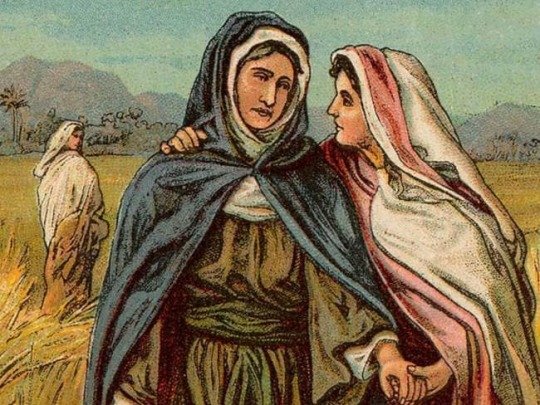
“Ruth said, ‘Do not press me to go back and abandon you! Wherever you go I will go, wherever you lodge I will lodge. Your people shall be my people and your God, my God. Where you die I will die, and there be buried. May the Lord do thus to me, and more, if even death separates me from you!’”
Ruth 1:16-17
You may expect this declaration of devotion to be made between two enamoured lovers. It does sound quite similar to wedding vows, especially "until death do us part" or even "for better or for worse, in sickness and in health." In fact, the YouCat (the Catholic Catechism designed for young people) quotes this exact passage in its section on marriage.
Yet these words were not made as a promise between husband and wife, but instead between two women.
The story of Ruth and Naomi can be found in the aptly named "Book of Ruth." In summary, Naomi's family move from Judah to Moab because of a famine. There, they meet Ruth and her sister Orpah. Naomi's sons marry the two women, and they live in peace for a time. Then, a sudden illness strikes, and both the boys (Mahlon and Chilion) and their father (Elimelech) die.
With nothing left, Naomi decides she must return to her homeland of Bethlehem (in Judah). Ruth and Orpah object, and offer to go with her, but Naomi tries to dissuade them. She says doesn't have any more sons for them to marry, giving them no financial or social security - to her, it seems, she is now useless and worthless. Orpah comes to accept this, remaining in Moab, but Ruth will not relent. It is here she makes her heartfelt speech stated at the start of this post, vowing her entire life to Naomi. Just normal friendship things! This causes Naomi to realise Ruth's love for her, so she finally accepts the offer.
Some of you may be thinking, "This is just platonic! This is just friendship! This is what any woman would do! Why do you have to make everything gay?"
Well, ask yourselves this: is it gay to leave behind your country and all the people you've ever known (including your sister) just to accompany another woman to her homeland?
...A homeland which you have never been to, and where the people there are your enemies? (Numbers 21, Judges 3)
...Travelling across a hostile desert environment, on your own for all we know? (see a map of Moab to Bethlehem)
...Despite your lover insisting you stay, and your sister deciding to stay, but instead you dedicate your life and soul to your lover? (Ruth 1:14-18)
Makes you think.
I can already see your objections: "But then Ruth married Boaz [her male relative]! Naomi told her to do it!"
Again, let us consider Naomi and Ruth's social standing. They were both women, both widows, both poor and starving. Ruth had to go foraging in the fields, collecting scraps of grain left behind so they could eat! (see Ruth 2:2-3, referring to Leviticus 23:22)
*this post is getting long so i'll post part two soon **sorry for the inconvenience lol
image credit: william blake

#ruth and naomi#are they gay#lesbian#wlw#bible#bible fandom#tanakh#book of ruth#my fav little lesbians#otp#bible women#judaism#christianity#ruth x naomi#sapphic#essay -ish#this is practice for my epq#because i'm obviously not going to yap about how ruth and naomi were actually gay to my catholic high school class#or am i#nmlnm#pride#art#william blake#bible stuff#cait's original yaps#mop
104 notes
·
View notes
Text









peaky blinders — 5x03 'strategy' created by steven knight
#the ep titled strategy when all i see is sapphics (to me!!!)#anyway linda's pivotal storyline let's gooooo#love the concept of linda being a good christian girl who saw the good in the least stable shelby member#and tried to bring out the best in him#only for him to be the one who brought out the worst in her#delicious stuff...#peaky blinders#linda shelby#kate phillips#lizzie stark#lizzie shelby#steven knight#period drama#tv shows#pb text post
30 notes
·
View notes
Text

#happy pride 🌈#queer pride#sapphic#love is love#healing#ex christian#deconstruction#atheist#literally nothing Christians believe make any sense but no point trying to tell them about any of this because they're brainwashed
69 notes
·
View notes
Text



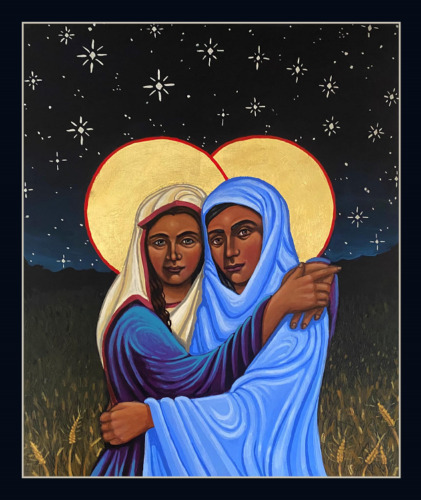


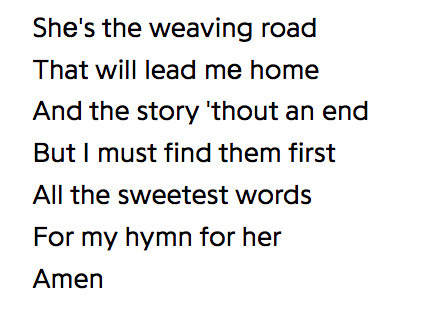






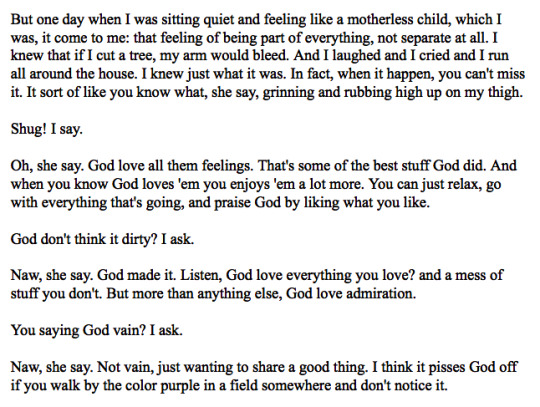

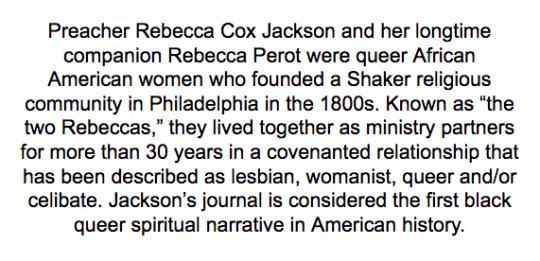





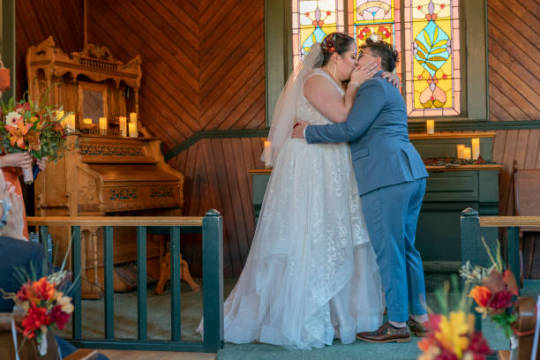






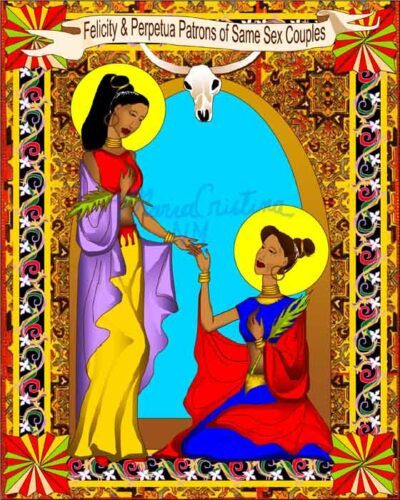
.
web-weaving: sapphic christians + love between women being holy
Sappho (attributed) / Gonzalo Orquin / Zolita “Holy” / Kelly Latimore “Ruth and Naomi” / The Bible “Ruth 1: 16-18” / tumblr user: thebichristian / AMES “Hymn For Her” / Warrior Nun / Yellowjackets / God Friended Me / The Expanse / Kittredge Cherry “Brigid and Darlughdach: Celtic saint loved her female soulmate” / Angela Yarber “Perpetua and Felicity” / Alice Walker “The Color Purple” / The Color Purple (1985) / Kittredge Cherry “The Two Rebeccas: Queer black pair founded Shaker religious community in 1800s” / As/Is “Can You Be A Queer Christian? • In The Closet” / Felix d’Eon “Sor Juana and the Countess” (Sor Juana y la Virreina) / The Bible “1 Corinthians 15:10” / Fly View Productions “Couple kiss during wedding ceremony in church stock photo” / Joe Mikos Photography “Cape Cod Wedding With Chinese and Italian Elements” / Sabrina Lee “A Perfect Rainbow on our Wedding Day” / Javicia Leslie “Actress Javicia Leslie says ‘God Friended Me’ isn’t a religious show. It’s about human connection.” / Zolita “Bedspell” album cover / Mary Lambert “She Keeps Me Warm” / Galawdewos “The Life and Struggles of Our Mother Walatta Petros: A 17th-Century African Biography of an Ethiopian Woman” / Maria Cristina “Felicity and Perpetua: Patrons of Same-Sex Couples”
bonus+

#christianity#christian#sapphic#wlw#lesbian#queer#lgbtq#gay christian#my post#web weaving#webweaving#religion#ruth and naomi#the color purple#qspirit
140 notes
·
View notes
Text
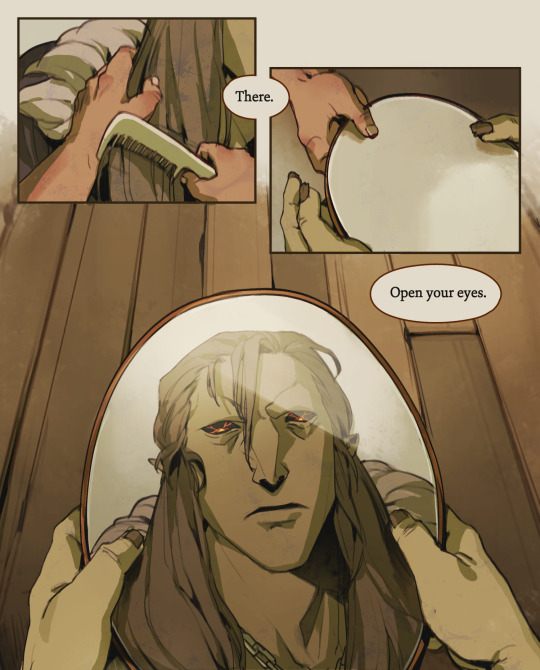
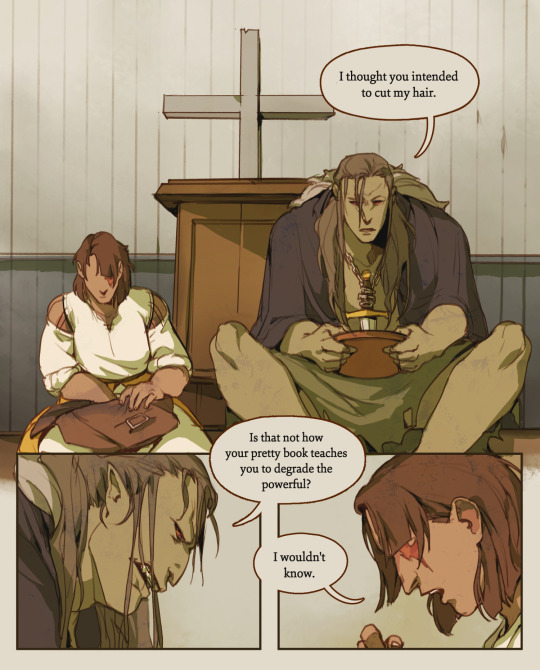


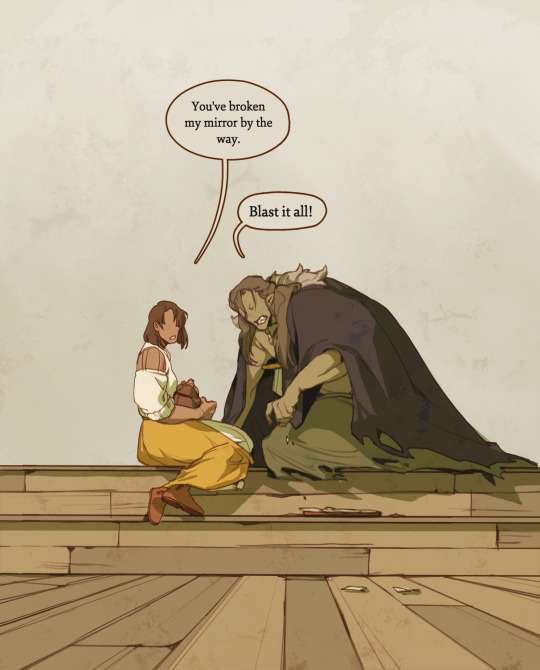
seeing clearer
(sequel to another comic of mine, the calamity.)
--
all my other comics
store
#cw: eye scarring#cw: christianity#as a theme. and not a particularly positive depiction either.#the calamity has anger issues but is earnestly trying her best#the survivor is patient#and also not scared of her at all#the calamity is talking about the story of samson and delilah in pg 2 btw#i tend to only make oneshot short story these days but im fond of this pair#had the urge to draw something a little mundane with these two and the slowest slow burn of a relationship you could ever imagine#also usually a broken mirror would equal 7 years of bad luck but the calamity so outclasses it as far as bad omens go#im pretty sure the effects are just cancelled out#anyway#next comic will be a different story entirely i promise#thank you for your patience#and as always#thank you for reading#comic art#sapphic art#stillindigo art#hearteaters#stillindigo comics
2K notes
·
View notes
Text

#pronouns#lgbtq community#lgbtqia#lgbt pride#lesbian#nonbinary#sapphic#nonbinary lesbian#queer#lgbtq#gay girls#flag#christianity#christian faith#christian broadcasting network#christian dior#christian living#bible#holy bible#christian blog#gender#gender stuff#intersex#queerness#queer stuff
11K notes
·
View notes
Text
Friendly reminder that if your feminism doesn’t include woc, queer women, trans women, disabled women, women of any religion, or sex workers then your “feminism” is shit <3
#val speakz#feminism#women of color#woc#wlw#sapphic#lgbtq#trans#transgender#disabled women#disability#muslim women#christian women#pagan women#jewish women#buddhist women#sex work is work#terfs fuck off#radfems fuck off
222 notes
·
View notes
Text
People really gasp when they find out I have had lesbian sex in a church during the service while my dad was the one preaching, but like, idk why 🤷♀️🤷♀️🤷♀️
#lesbian#fuck#sapphic nsft#wlw ns/fw#lesbians#wlw nsft#love#butch lesbian#wlw#butch daddy#christianity#sacrilegious#sacrilege#religion#religious trauma#femme lesbian#femme4butch#femme#public whor3#holy fuck
59 notes
·
View notes
Text
actually God loves lesbians too he literally told me so
#he loves all the queers#cuz he made us#lgbt#lgbt christian#lgbtqia#lgbtq community#lgbt pride#lgbtq#wlw#wlw post#wlw love#sapphic#lesbianism#lesbian#sapphic love#lesbian christian#lesbian pride#nblw#sapphic christian#queer#queer christian#queer community#txt#text#gay#gay christian#bisexual#pansexual#nonbinary
67 notes
·
View notes